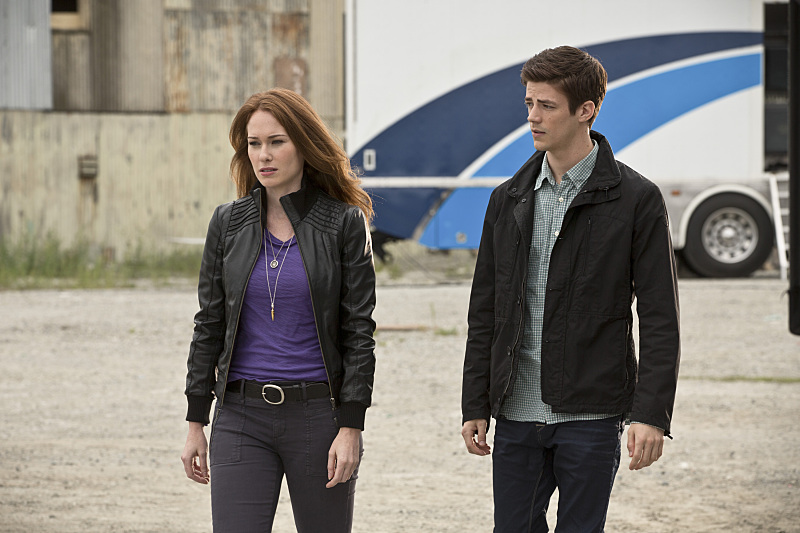The Flash, Season 1, Episode 5, “Plastique”
Written by Aaron Helbing & Todd Helbing & Brooke Eikmeier
Directed by Dermott Downs
Airs Tuesdays at 8pm ET on the CW
Hot damn! I normally like to write about the events in the episode in the order they happened, but we have got to talk about that ending! Gorilla Grodd is coming! He was teased in the pilot, but in a brief flashback we saw that the gorilla (who is seemingly just a poor lab ape at that point) was at the center of the rift between Wells and General Eiling. Wells telling the sad primate that he has “a very different future planned” is an enticing tease for the most out-there concept of the show yet.
Now on to the meat of “Plastique”, which starts with a supposed bomb going off in Central City and the sudden intrusion of the army, led by Eiling (Highlander’s Clancy Brown), who are investigating the matter, much to the suspicion of our crew at S.T.A.R. labs. Of course it’s not just a bomb that caused the explosion, but a new meta-human named Bette Sans Souci (Kelly Frye), aka Plastique, who has the ability to blow up anything she touches. Clancy Brown plays a wonderful militarily man, doesn’t he? He’s tough, calculating, gruff, and cold as the comic book general. Brown is an actor who, when used properly, brings a nice weight to a show and is almost always threatening, no matter what he’s doing. He will likely be back and is bound to be a crucial player in the show’s future.
“Going Rogue”, (the show’s best outing yet) saw the introduction of Wentworth Miller’s Captain Cold, who is the first great villain of The Flash. Plastique can’t really be labeled a villain, as she is more a victim of circumstance with good intentions, but she’s another strong antagonist for Barry and company. Frye plays a believable former soldier and her resistance to authoritarian figures like Eiling makes sense. Wells convincing her to kill the general (his most outwardly evil act since killing William Sadler’s character a few weeks back) is a great moment for both characters, although the resulting conflict feels a little bit rushed.
The real climax of the episode takes place after Plastique’s death and Barry’s mad dash to get her away from the city before her body unleashes a devastating explosion. The episode set up Barry’s evolving abilities as he figured out how to run up buildings, so running on water is a natural progression. It is a big and exciting, comic booky moment and a great way to cap the main plot of this week’s episode.
The secondary story is more personal for Barry and Iris, as her interest in The Streak (how great will it be when that name is gone?) concerns both Barry and her father. She sees the Flash in his full crimson getup for the first time this week and their confrontation reveals that a major reason for her continued interest in the hero is to help Barry and his past of searching for the impossible. That motivation demonstrates why the characters of The Flash are some of the most insanely likable on TV today, and what keeps us invested in this superb show.


